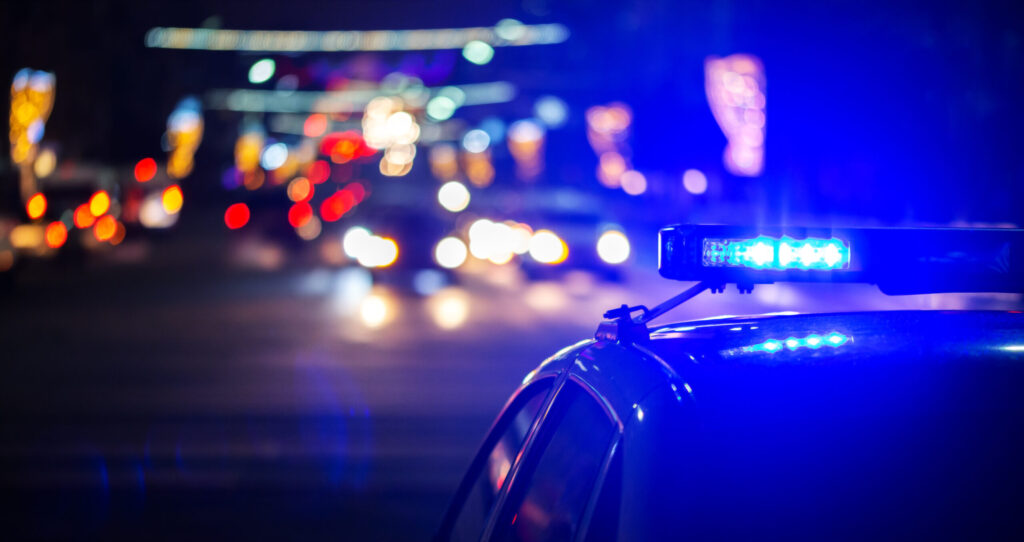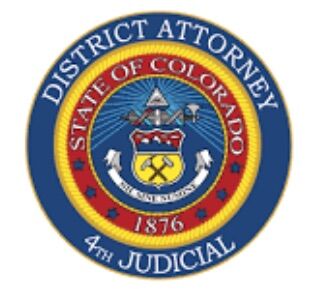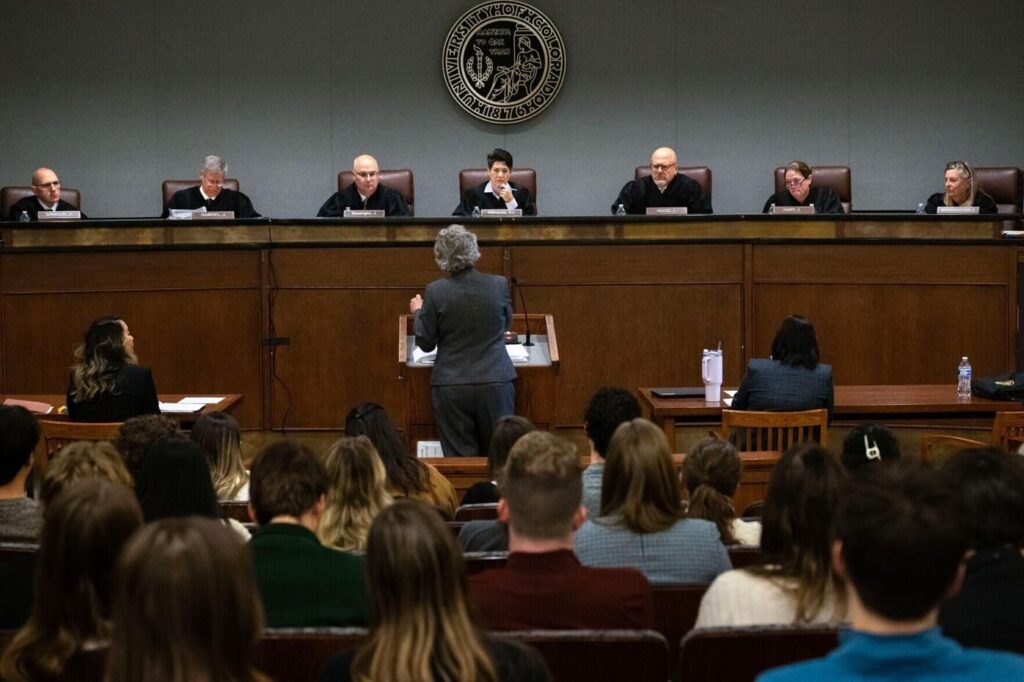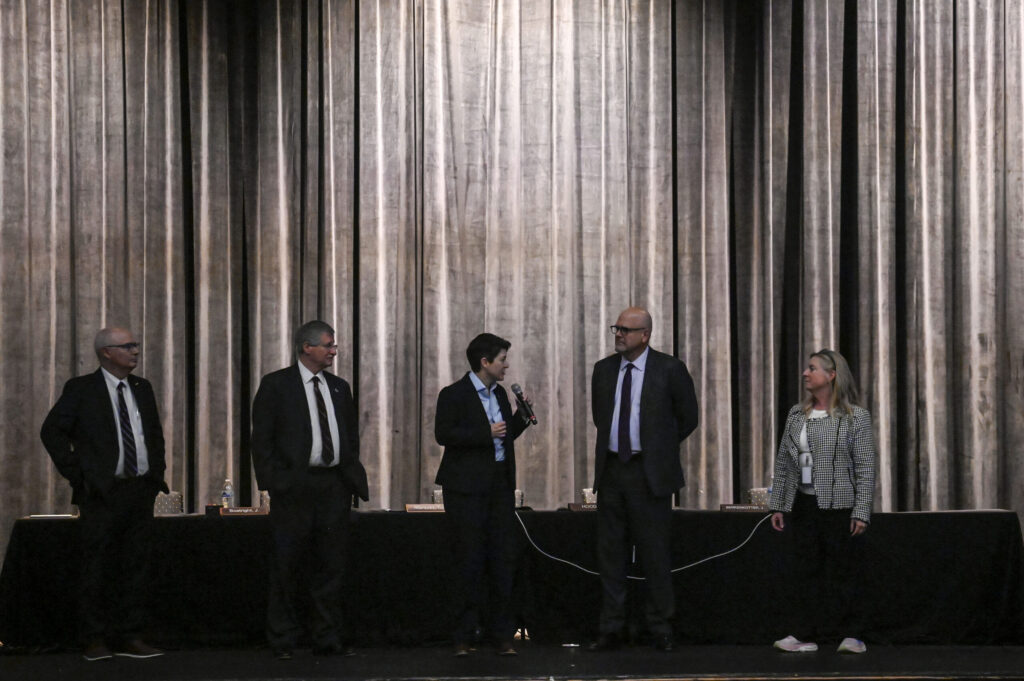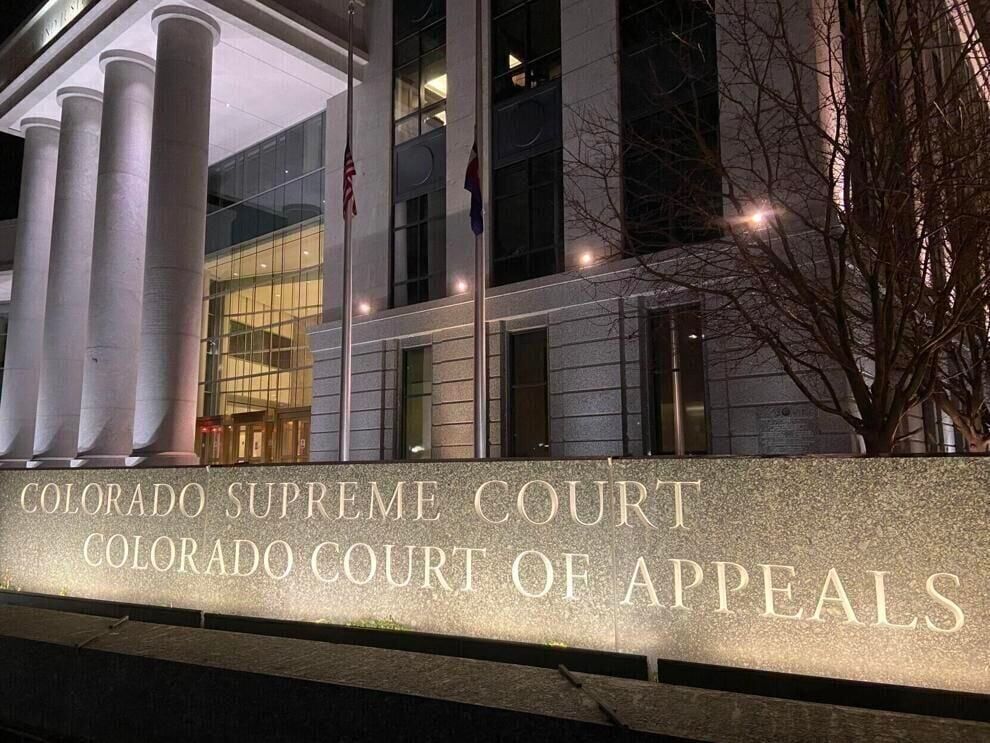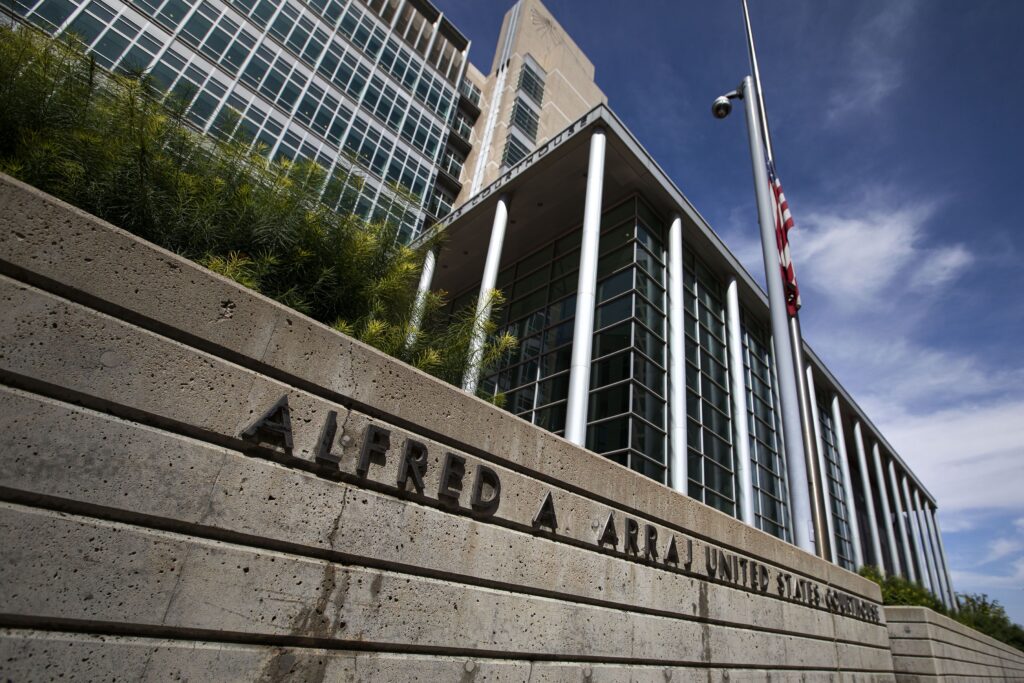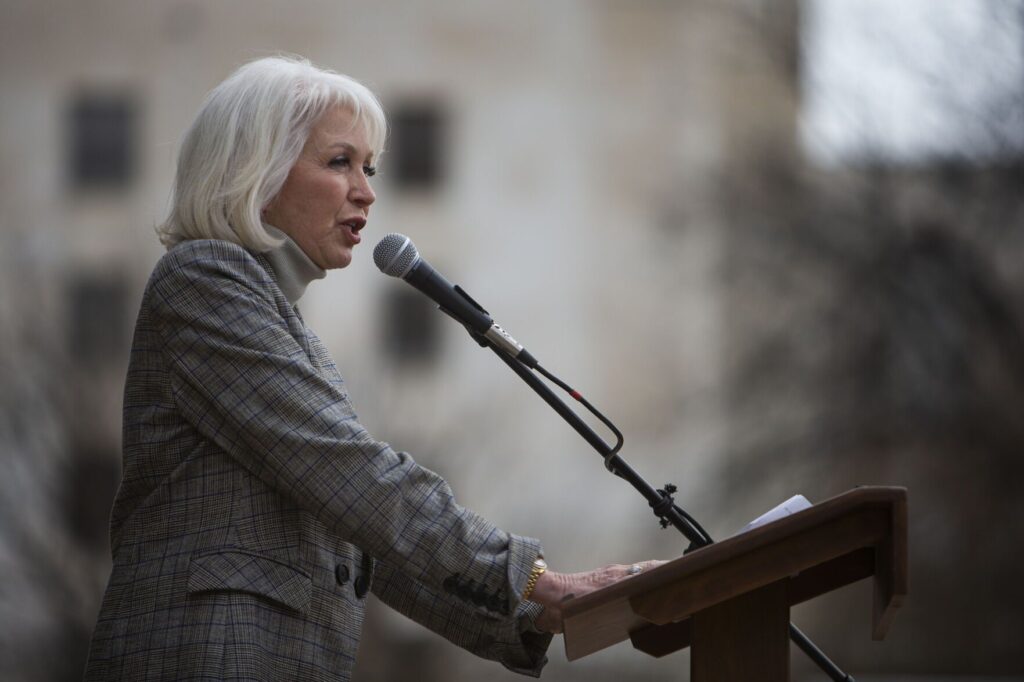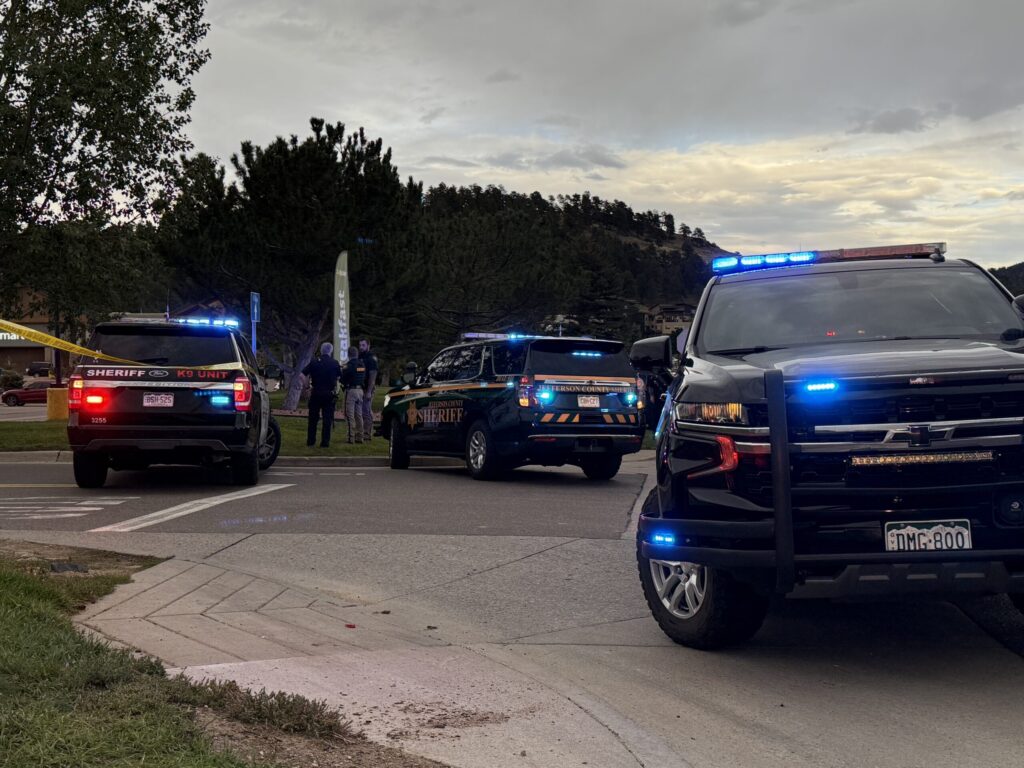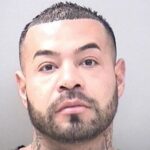Colorado justices field questions about values, disagreement at East High School
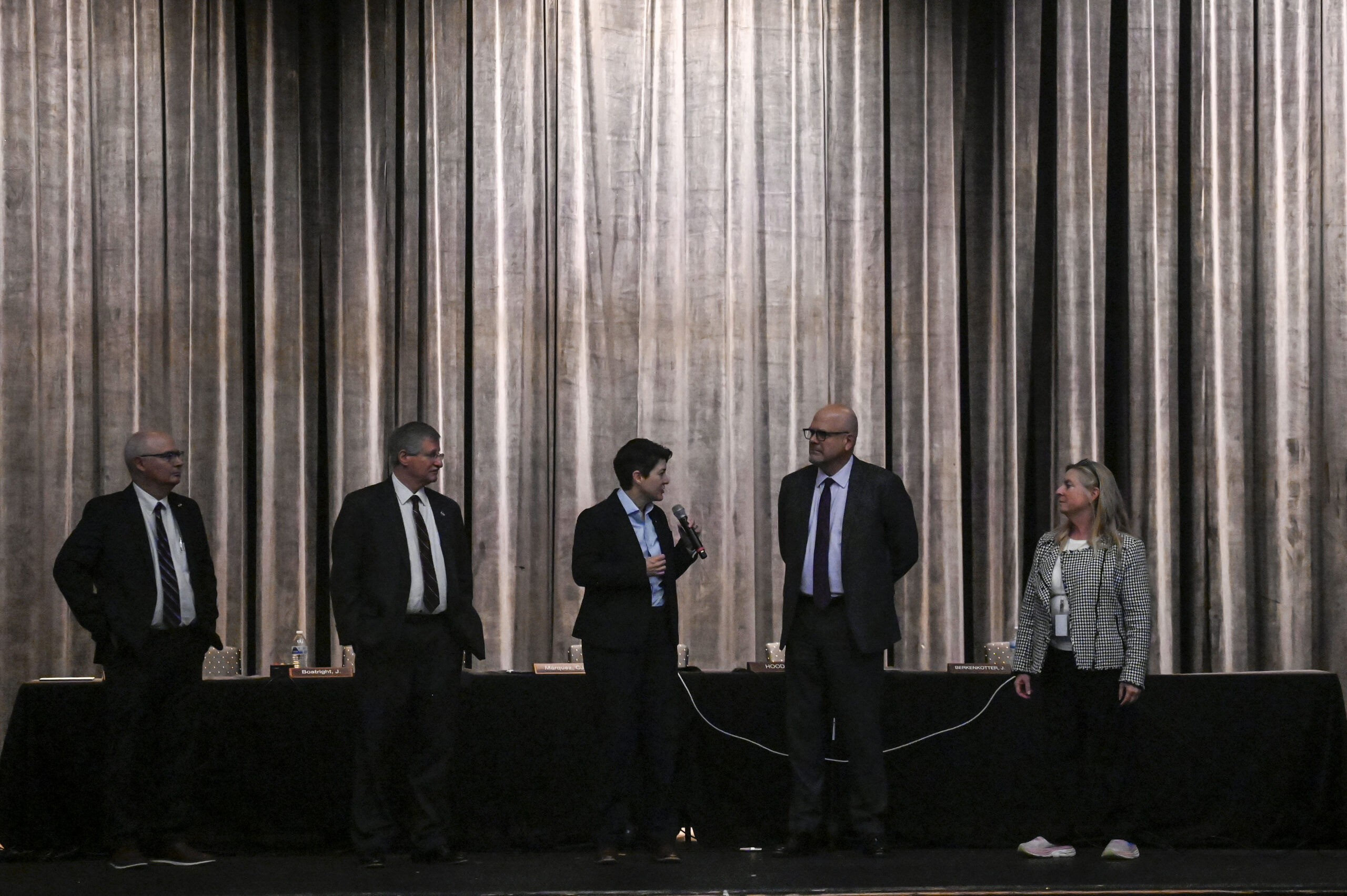
Members of the Colorado Supreme Court fielded probing — and in some instances, tough — questions from East High School students on Thursday, including how the court balances existing law with “evolving social values.”
“Often what we’re looking at is what the General Assembly has given to us in the form of a statute,” said Justice William W. Hood III. “Usually, we defer to them as representatives of the people in terms of the measure of progress they want to see on any particular issue.”
However, with ambiguous laws, the justices can “think about the consequences for people. We’re permitted to do that and often do.”
Another student asked whether the “values illustrated by the Constitution and Declaration of Independence are still being upheld.” Chief Justice Monica M. Márquez said the answer is yes, “in Colorado.”
“I think we’re seeing a lot of challenges to what we call the rule of law right now, just to be honest. I still have so much faith in our judicial system here in Colorado,” she said. “We also have an amazing legal community here in Colorado … deeply committed to the rule of law. So, I feel really good about where we are in Colorado.”
The Supreme Court’s trip to East High in Denver was part of the long-running “Courts in the Community” program. The state’s appellate courts travel outside of their courthouse in downtown Denver in the spring and fall to hear oral arguments in real cases, and then members have lunch with students in attendance.
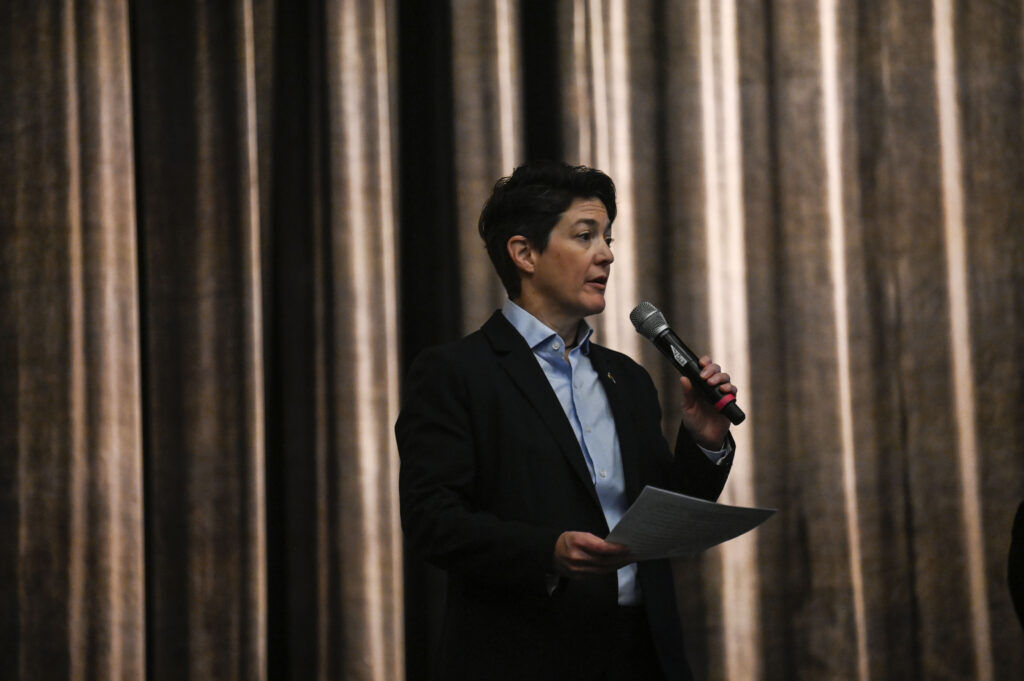
Social studies teacher Mandy Hostetter, who also runs East High’s constitutional scholars program, coordinated with the Supreme Court for the event. Teachers spent time reviewing the cases with students, including the legal vocabulary. She said students had strong feelings “on each side” about the two criminal appeals the court heard, but they were more sympathetic to the defendants.
“They generally always ask really good questions,” Hostetter said. “I would say some of them were even better than what I was expecting.”
Among other things, students wanted to know how the justices handle disagreements among themselves.
“I would say one thing that works really well for us is we assume good intent. And even if Justice Gabriel and I disagree about something, I assume he’s coming from a place of good faith, as am I,” said Márquez, who got into a heated exchange with Justice Richard L. Gabriel during one of the arguments.
“I don’t see any of us really bringing ideology to our discussions about how to apply the law. The truth is that we all end up with our biases based on how we were raised and educated and other things,” said Hood. “We don’t have problems with infighting. I’m not even sure how much they have at the United States Supreme Court, even though a lot of people would guess that they bicker a lot.”
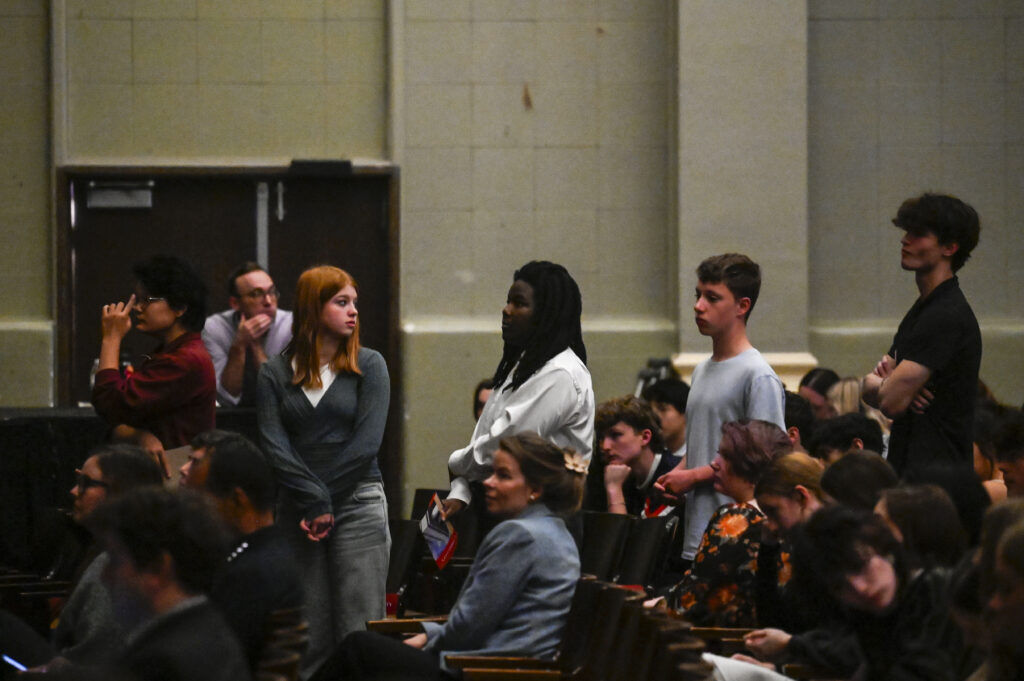
In response to a question about the justices’ least favorite aspect of their job, Gabriel raised the “unrelenting” workload.
“It’s hard to leave it at the office and separate yourself. We don’t just do these cases. The chief is essentially the chief executive of the entire judicial branch. We have a lot of administrative responsibilities,” he said. “It’s time away from your family and your loved ones.”
“We can work anywhere. The problem is we can work everywhere,” echoed Justice Brian D. Boatright. “We’ll be texting and emailing into the evening hours, over the weekends, and that can be difficult.”
Márquez agreed that members are justices “24/7.”
“I don’t get to fold up my robe and responsibilities and stuff them in my closet on a Friday night and go out and party. I am a justice all week long in every setting,” she said. “I think some of the challenge is you lose some anonymity as a justice. I don’t get to be just a regular person anymore. And that can weigh on you after a while.”
“Were you ever a regular person?” joked Hood.
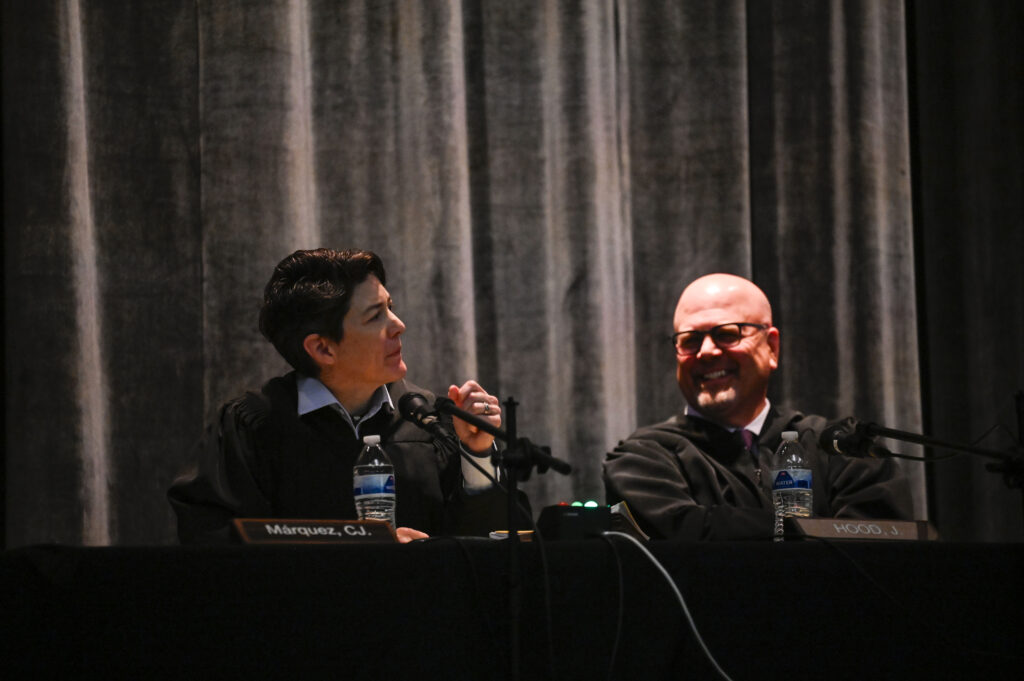
Another student asked how the justices can remove bias from their decision-making. Boatright said that in cases with horrific facts, he tries to “feel any emotion, then put it aside and do my job.”
If the law dictates an undesirable outcome, “It doesn’t mean you’re totally powerless,” said Gabriel. “We might write an opinion that sends a little message to the legislature saying, ‘I think you might want to take a look at this.’ That’s perfectly appropriate.”
Attendees also got the opportunity to question the two sets of lawyers who argued cases. One appeal pertained to allegations of a racially motivated murder prosecution in Arapahoe County. The other questioned whether Denver police respected a suspect’s invocation of his constitutional right to counsel.
One student asked why the court poses questions about hypothetical scenarios during oral arguments.
The goal is to illustrate, “‘If this were true, you recognize this must also be true’,” said Patrick R. Henson, the defense attorney in the Arapahoe County case. “I try to answer their question, but also not cede.”
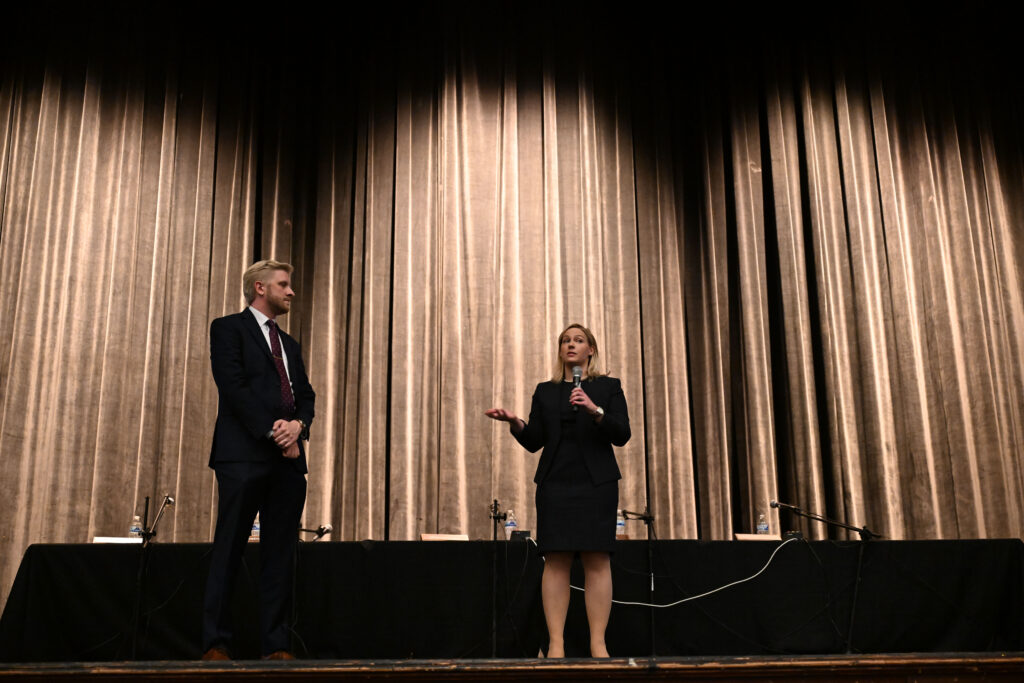
Another student asked whether the attorneys’ goal is to set a precedent for future cases, or simply to win their case.
“I don’t think I have a particular view on whether I want this to become a named case that’s cited for a million years,” said Deputy District Attorney Anya Havriliak in the Denver appeal.
“My goal is to acquit (my client),” added public defender Robert Swestka.
Ainsley Oliver, a senior who participated in East High’s constitutional law program, said the curriculum provided knowledge about how the government functions and how law is applied.
“Civic education is so, so essential and I don’t think that it’s coveted enough by high school students, by youth in general,” she said. “And I think everybody should care about their government because it impacts everything.”
Eva Nuber, also a senior and constitutional law program participant, said that interacting with lawyers helped her decide upon a career path and learn more about the institutions she wants to be a part of.
“Because of con law, but also as a citizen of the U.S.,” she said, “I think a lot of very valuable progress is being reversed very systemically and that makes me really upset.”
Justices Melissa Hart and Carlos A. Samour Jr. were not present for the event. A judicial branch spokesperson said both were absent for personal reasons.


